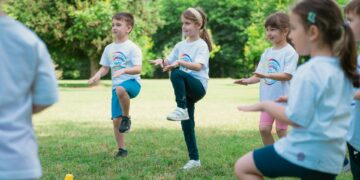It is lifesaving.
In a quiet indoor pool decorated with playful fish designs, young children splashed and kicked gently under the close guidance of attentive instructors. This wasn’t a typical swim class — each student had autism, and the program was tailored to meet their specific needs. Instructors worked closely with the children, often one-on-one or in pairs, using visual aids to communicate rather than loud instructions or whistles. The goal: to teach vital water safety skills in a supportive and sensory-aware environment.
Drowning poses a significant risk to children with autism, particularly in states like Florida, where water is nearly everywhere — from beaches to backyard pools. Since 2021, over 100 children with autism or those being evaluated for it have drowned in the state, according to the Children’s Services Council of Palm Beach County. Autism often involves a tendency to wander and limited awareness of danger, making swimming lessons not just beneficial but potentially life-saving.
Yet for many families, swim instruction can be difficult to access or unsuitable for children with sensory sensitivities and behavioral challenges. Public swim programs may not be equipped to handle these needs, and private lessons can be expensive. Specialized programs like those at Small Fish Big Fish swim school, supported by grants and trained by organizations such as the Autism Society, offer a lifeline to families searching for safe and effective instruction. Some children, once hesitant to enter the water, now smile as they learn to float and swim.
Advocates and researchers emphasize the importance of these programs. Experts like Columbia University’s Dr. Guohua Li have called swimming lessons a critical early intervention for children with autism. Some children, even those with severe symptoms, have shown progress after just a few hours of therapy in the water. Despite the fear that aquatic environments might overwhelm autistic children, many are thriving when taught in the right setting by professionals who understand their needs.
With growing awareness of the risks and the value of tailored instruction, efforts are expanding. Training for instructors is increasing worldwide, and more funding is going toward specialized classes. Parents, like those watching their children swim with confidence and joy at programs like Small Fish Big Fish, often describe the experience as transformative. For many, the most powerful takeaway isn’t just the safety skills — it’s seeing their child light up with happiness and pride.

































Discussion about this post